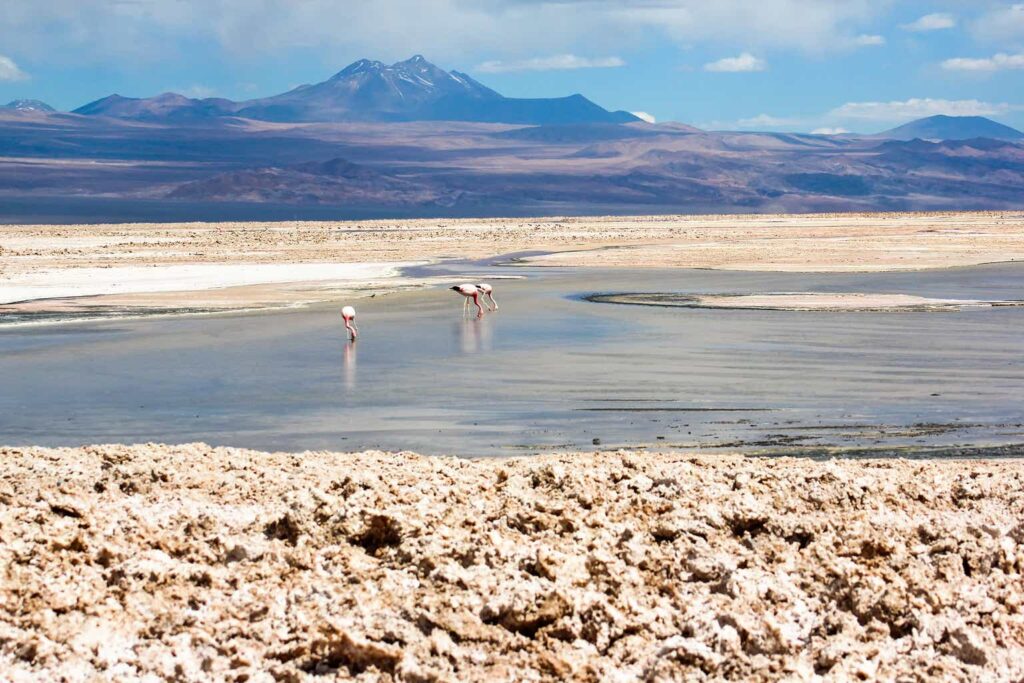The request raised by Albemarle a few days ago to review the environmental qualification resolutions (RCA) granted to SQM and to Albemarle itself in recent years represents a risk to the fulfillment of the lithium production projections of both this company and the SQM-CODELCO association in the Salar de Atacama.
Different hydrogeological models and field studies have shown that there is a significant influx of freshwater from beyond the salt flats to try to compensate for the depletion of saline aquifers when brine pumping increases beyond certain limits. Albemarle’s observations suggest that SQM’s extraction activities would have had a greater impact than Albemarle’s on the decreases in brine and fresh water in the Salar de Atacama aquifer.
Within the framework of the recent agreement signed between SQM and CODELCO, two production projections have been established for the following years. Firstly, for the period 2025-2030, an additional production of 300 thousand tons of lithium carbonate equivalent (LCE) is planned. It should be taken into account that, in 2023, SQM would have produced a total of 165,500 tons of LCE. Secondly, between 2031 and 2060, an annual production of 280-300 thousand tons of LCE is planned. It is assumed that for this increase it will be necessary to apply new technologies, possibly direct lithium extraction (DLE).
Similarly, Albemarle projects an annual production of 100 thousand tons of LCE starting in 2025, with the possibility of increasing this volume (to levels not yet identified) later, to the extent that it can also introduce new technologies, such as DLE. The latter is framed in the agreement signed by Albemarle with CORFO in May 2024 that will allow it to increase its production quota from 460 thousand to 700 thousand tons of lithium metal equivalent (LME) until the conclusion of its contract in 2043. It is important to note that, in 2023, Albemarle would have produced 68,580 tons of LCE. This number was obtained by subtracting SQM’s production from the USGS 2023 estimate for Chile.
As a first approximation, the application of DLE methods could contribute to solving this problem since it would involve a process of reinjection into the salt flat of the “spent brine”, that is the brine resulting from the direct extraction of lithium, mainly through selective adsorption or ion exchange techniques, which have become the most popular DLE techniques today.
However, there are two issues pending analysis that could pose some difficulties. In principle, it is known that, in general, the first technique would mean a significant increase in the use of freshwater beyond the average used in the lithium carbonate processing stage in the chemical plant. Likewise, it remains to be seen whether the reinjection of the spent brine could not give rise to environmental effects arising from its contamination by the adsorbents or resins used in the direct lithium extraction processes. The second technique could exacerbate this problem due to the possible use of acids in the lithium separation process.
An alternative way out of this crossroads would be a fundamental change in approach. It would involve the integral application of DLE techniques, which would allow the extraction not only of lithium but also of other valuable minerals contained in the brine and, fundamentally, fresh water, as by-products. In this way, it would no longer be necessary to reinject the spent brine, with which the possible decrease in fresh water in the Salar de Atacama aquifer would be compensated by obtaining the liquid element for agricultural activities and human consumption.
Read the full article here



